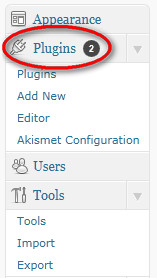So you’ve been putting great content out on your site, sharing it every where you can and directing everyone in your network to it. But do you know if people are actually clicking these links and when? This information is crucial to figuring out what kind of traffic you’re driving, if your content is keeping people engaged and if the links to your site are inviting.
Luckily, there are some great tools to help you track you links and visitors to your page. Gone are the visit counters at the bottom of webpages, because pure numbers don’t really tell you anything. Now there are sites to help you easily track links and clicks without having to set up an entire analytics account. Read on for how to use these tools and get results.
Link Tracking Sites
Link tracking sites are very easy to use, and most just require a quick registration. They allow you to shorten, share and track links. Unlike site analytics programs, link tracking sites allow you track links from as many different websites as you would like all at once. These sites work by creating a shortened link for the URL you copy and paste into their program. Once the shortened link is created from you original URL you can then use that shortened link, which will look something like this: http://bit.ly/h7zi7A anywhere you’d like and see real time date for clicks. These shortened links function just like regular URLs.
Link tracking is helpful for seeing how often your link has been clicked, what the most popular click times were and clicks over a longer period of time like multiple months. You can take the link data these sites share and see what kind of content you’re sharing gets the most clicks and at what time to ensure you are posting content your visitors will like. Link tracking sites are also great for Twitter and other micro blogging sites with limited space as these services can make even the longer links much shorter.
Some examples of Link Tracking sites to check out:
Bitly- http://bit.ly/
TweetBurner- http://tweetburner.com/
Tiny URL- http://tinyurl.com/
Ow.ly- http://ow.ly/url/shorten-url
Remember to be able to rack these links you must sign up for an account. Happy Tracking!
Happy Earth Day, too!
